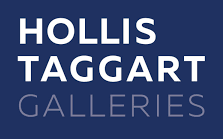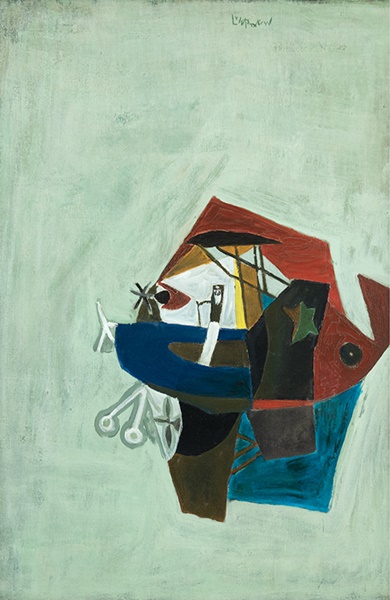New Acquisition
Roy Lichtenstein

TAGGART HOLLIS
521 W 26th Street, 7th Floor New York, NY 10001T: 212.628.4000 F: 212.570.5786 e-mail:
OVERVIEW :
Founded in 1979, Hollis Taggart presents significant works of American art, showcasing the trajectory of American art movements from the Hudson River School to American Modernism and the Post-War and Contemporary eras. Its program is characterized by a deep commitment to scholarship and bringing to the fore the work of under-recognized artists. The gallery has sponsored several catalogue raisonné projects, most recently for the American Surrealist artist Kay Sage, and has been instrumental in advancing knowledge of such artists as Alfred Maurer, Arthur B. Carles, and more recently, Theodoros Stamos, Marjorie Strider, and Michael (Corinne) West. In the summer of 2019, the gallery announced the formal expansion of its primary market business and focus on the presentation of contemporary work. It continues to expand its roster of contemporary artists, focusing on emerging and mid-career talents. With more than 40 years of experience, Hollis Taggart is widely recognized by collectors and curators for its leadership, expertise, and openness, on matters of art history, and market trends and opportunities.
> May 2024




The Flying Machine, circa 1954 Oil on canvas 36 x 24 in. (91.4 x 61 cm) Signed upper right
ABOUT ARTISTS : Roy Lichtenstein
Lichtenstein first studied under Reginald Marsh at the Art Students League in the summer of 1939, and continued his education at the Ohio State University. In the early 1960s Lichtenstein took a position at Rutgers University, where he met Allan Kaprow and other artists associated with Happenings, who encouraged his interest in cartoon imagery. Lichtenstein realized that the artistic devices that cartoonists used were very similar to those employed by Picasso and Klee, whom he had studied so intensively. The artist’s work from this period reveals a stylistic change: whereas he had previously translated his source materials into personal variations of Cubist or Expressionist techniques, he now drew from comic strips not only the subject matter but also the style. In his Pop paintings, he used highly simplified color schemes and procedures that mimicked commercial printing techniques, such as the Ben Day dots used in newspaper printing. In an irony very much appreciated by the artist, what had been an anonymous style of the printing press became Lichtenstein’s “signature” style.
Lichtenstein is widely acknowledged as one of the most influential artists of the twentieth century. In 1979 the artist was inducted into the American Academy of Arts and Letters, and in 1995 he was honored with a National Medal of the Arts. Until his death in 1997 at age 73, he continued to paint, sculpt, and make prints. To date, more than 200 solo exhibitions of Lichtenstein’s art have been mounted.
ABOUT EXHIBITION : New Acquisition
An artist whose oeuvre has become synonymous with Pop Art, Roy Lichtenstein (1923-1997) became widely celebrated for his tongue-in-cheek, ironic approach to painting and popular imagery. The Flying Machine (c. 1954) is an excellent example of Lichtenstein’s early work, combining the flattened pictorial space of Cubism and the whimsical colors of a Klee-inspired Expressionist style. Lichtenstein had been working in a style heavily influenced by Picasso throughout the late 1940s and early 1950s, while he was simultaneously working as an industrial designer and an engineering draftsman. Influenced by his industrial, commercial work, Lichtenstein often turned to subjects most readily at hand, namely, the diagrams and illustrations of industrial parts, tools, and machines. What followed were works such as Device with Crank (1954; Walker Art Center), Mechanism, Cross Section (c. 1954; Flint Institute of Arts), and The Flying Machine, among many others made that year. Some of these canvases call to mind the diagrammatic works of Francis Picabia or the playful mechanics of Stuart Davis. In The Flying Machine, we detect conceptual themes that would become fundamental concerns to Lichtenstein’s practice: the relationship between mechanical technologies and the work of art. Lichtenstein’s project, art historian Michael Lobel has argued, is “structured by the tension between painting understood as a fully expressive, humanistic gesture and, conversely, as the product of a purely mechanical act.”
An artist whose oeuvre has become synonymous with Pop Art, Roy Lichtenstein (1923-1997) became widely celebrated for his tongue-in-cheek, ironic approach to painting and popular imagery. The Flying Machine (c. 1954) is an excellent example of Lichtenstein’s early work, combining the flattened pictorial space of Cubism and the whimsical colors of a Klee-inspired Expressionist style. Lichtenstein had been working in a style heavily influenced by Picasso throughout the late 1940s and early 1950s, while he was simultaneously working as an industrial designer and an engineering draftsman. Influenced by his industrial, commercial work, Lichtenstein often turned to subjects most readily at hand, namely, the diagrams and illustrations of industrial parts, tools, and machines. What followed were works such as Device with Crank (1954; Walker Art Center), Mechanism, Cross Section (c. 1954; Flint Institute of Arts), and The Flying Machine, among many others made that year. Some of these canvases call to mind the diagrammatic works of Francis Picabia or the playful mechanics of Stuart Davis. In The Flying Machine, we detect conceptual themes that would become fundamental concerns to Lichtenstein’s practice: the relationship between mechanical technologies and the work of art. Lichtenstein’s project, art historian Michael Lobel has argued, is “structured by the tension between painting understood as a fully expressive, humanistic gesture and, conversely, as the product of a purely mechanical act.”
ABOUT ARTISTS : Roy Lichtenstein
Lichtenstein first studied under Reginald Marsh at the Art Students League in the summer of 1939, and continued his education at the Ohio State University. In the early 1960s Lichtenstein took a position at Rutgers University, where he met Allan Kaprow and other artists associated with Happenings, who encouraged his interest in cartoon imagery. Lichtenstein realized that the artistic devices that cartoonists used were very similar to those employed by Picasso and Klee, whom he had studied so intensively. The artist’s work from this period reveals a stylistic change: whereas he had previously translated his source materials into personal variations of Cubist or Expressionist techniques, he now drew from comic strips not only the subject matter but also the style. In his Pop paintings, he used highly simplified color schemes and procedures that mimicked commercial printing techniques, such as the Ben Day dots used in newspaper printing. In an irony very much appreciated by the artist, what had been an anonymous style of the printing press became Lichtenstein’s “signature” style.
Lichtenstein is widely acknowledged as one of the most influential artists of the twentieth century. In 1979 the artist was inducted into the American Academy of Arts and Letters, and in 1995 he was honored with a National Medal of the Arts. Until his death in 1997 at age 73, he continued to paint, sculpt, and make prints. To date, more than 200 solo exhibitions of Lichtenstein’s art have been mounted.
 Roy Lichtenstein
Roy Lichtenstein Artist's site : https://lichtensteinfoundation.org/
Artist's mail :
Artist's CITY :NEW YORK NY
Artist's COUNTRY :U.S.A.
Gallery Opening Hours : Monday - Friday, 10AM - 5:30PM Saturday, 11AM - 5:30PM
mpefm U.S.A. art press release
QR of this press release
in your smartphone, tablet








